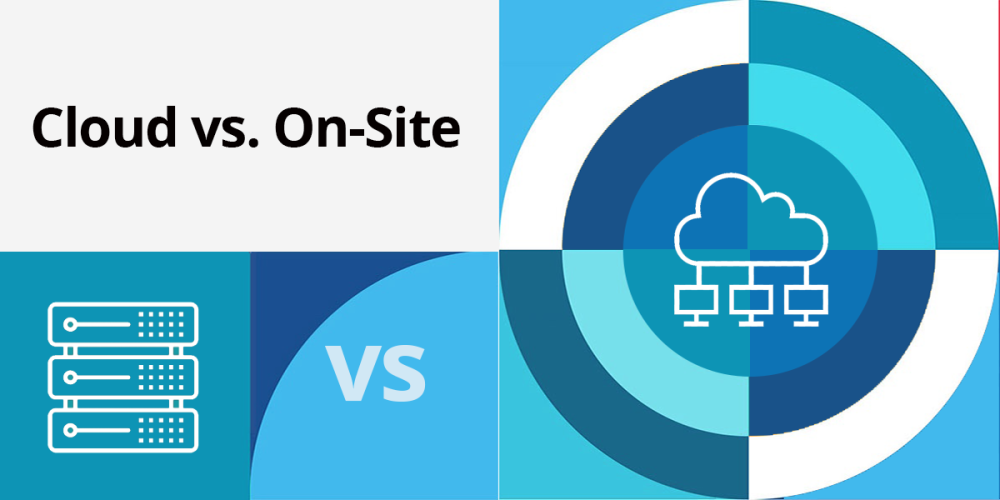
One of the most critical IT decisions companies face is whether to keep their IT systems on-site or migrate to the cloud. With all the marketing hype pushing companies to move to the cloud, it’s easy to feel like this is the only option. However, migrating to the cloud is not the best decision for every company. This decision affects not just day-to-day operations but also long-term scalability, security, and overall performance. In this article, we’ll break down the key factors you need to consider when deciding what’s right for your company.
Cloud-Based Systems
Cloud infrastructure refers to services provided over the internet, removing the need for on-premise hardware. With cloud computing, companies can access powerful computing resources, storage, and applications on a pay-as-you-go basis. Popular models include:
- SaaS (Software as a Service) – Provides software applications over the internet (e.g., Office 365).
- IaaS (Infrastructure as a Service) – Offers computing infrastructure (e.g., AWS).
- PaaS (Platform as a Service) – Provides a platform for building, testing, and deploying applications (e.g., Microsoft Azure).
Cloud solutions are ideal for businesses that need flexibility, scalability, and minimal capital investment.
On-Site (On-Premise) Systems
On-site systems refer to IT infrastructure hosted and managed within the company’s physical premises. This setup gives businesses full control over their data and IT environments, offering customized security configurations. On-premise solutions are common in industries with strict regulatory and security requirements, like finance and healthcare.
Key Factors to Consider When Evaluating Cloud vs. On-Site
1. Cost
On-Site: Investing in on-premise systems requires significant upfront capital to purchase servers, networking equipment, and software. Additionally, ongoing costs for maintenance, upgrades, and IT staff salaries add up over time.
Cloud: Cloud services offer a subscription-based model, which can lower the upfront investment. However, costs can fluctuate based on usage, and businesses need to monitor cloud service fees to avoid unexpected spikes.
2. Scalability and Flexibility
On-Site: Scaling on-premise infrastructure requires purchasing new hardware, which can be time-consuming and expensive. If your business grows rapidly, this could lead to delays in expanding IT capacity.
Cloud: One of the cloud’s greatest advantages is its scalability. Companies can easily scale up or down based on their needs without worrying about buying new equipment. This flexibility makes the cloud ideal for businesses that experience fluctuating demands.
3. Security and Compliance
On-Site: Hosting IT systems on-site gives businesses full control over security measures, including firewalls, encryption, and access controls. This is especially important for industries that handle sensitive data and must adhere to strict compliance regulations (e.g., HIPAA, GDPR).
Cloud: While many cloud providers offer robust security features, businesses may have less control over how data is managed. It’s crucial to ensure the cloud provider complies with industry regulations and offers security that matches your company’s needs.
4. Performance and Reliability
On-Site: On-premise systems can deliver high performance, especially for mission-critical applications. However, businesses must invest in redundancy and backup systems to ensure uptime and avoid potential data loss during hardware failures.
Cloud: Cloud providers typically offer high reliability, with built-in redundancy and disaster recovery options. However, performance may be impacted by internet connectivity issues or latency, depending on the application and workload.
5. Control and Customization
On-Site: With on-premise systems, IT teams have full control over every aspect of the infrastructure. They can tailor configurations to meet the business’s unique needs and perform custom upgrades or changes.
Cloud: Cloud solutions may have limitations in customization due to the provider’s standard offerings. For companies with highly specific IT requirements, this could be a disadvantage.
6. IT Support and Maintenance
On-Site: Managing an on-site system requires a dedicated in-house IT team to handle maintenance, updates, and troubleshooting. This can lead to higher labor costs and require IT staff to be on call 24/7.
Cloud: With cloud solutions, the provider handles most of the maintenance, including updates and security patches, reducing the burden on internal IT teams. This allows businesses to focus more on core activities instead of managing infrastructure.
Cloud vs. On-Site: Real-World Use Cases
- Small Business Needing Scalability
A small e-commerce company experiencing rapid growth might benefit from migrating to the cloud. They can scale up storage and computing resources as demand increases without the need for expensive hardware upgrades. - Large Enterprise with Strict Compliance
A financial services company subject to stringent regulatory requirements may choose to keep its IT systems on-site to maintain full control over security and data governance. - Hybrid Solution
Many businesses opt for a hybrid model, combining both cloud and on-site solutions. For example, a manufacturing company might store sensitive data on-site while using cloud-based software for collaboration and customer relationship management (CRM).
How to Make the Right Decision for Your Company
1. Conduct a Thorough Needs Assessment
Evaluate your company’s current infrastructure, future growth plans, and any industry-specific regulations that might impact your decision. For example, businesses that handle large amounts of data or require significant processing power may benefit more from cloud solutions, while those with strict compliance requirements may lean toward on-site solutions.
2. Engage Key Stakeholders
Bring key decision-makers into the conversation, including executive leadership, finance, and IT teams. Each will have different priorities that must be weighed when determining the right solution.
3. Test a Hybrid Approach
If you’re unsure which solution is the best fit, consider adopting a hybrid approach. This allows you to leverage the scalability of the cloud while retaining control over critical data and applications on-site.
Deciding between cloud and on-site IT systems is not a one-size-fits-all decision. It requires a careful assessment of your company’s needs, budget, and regulatory environment. While the cloud offers flexibility and scalability, on-site solutions provide greater control and customization. Ultimately, the right choice depends on your long-term goals and how you want to manage your IT infrastructure.
